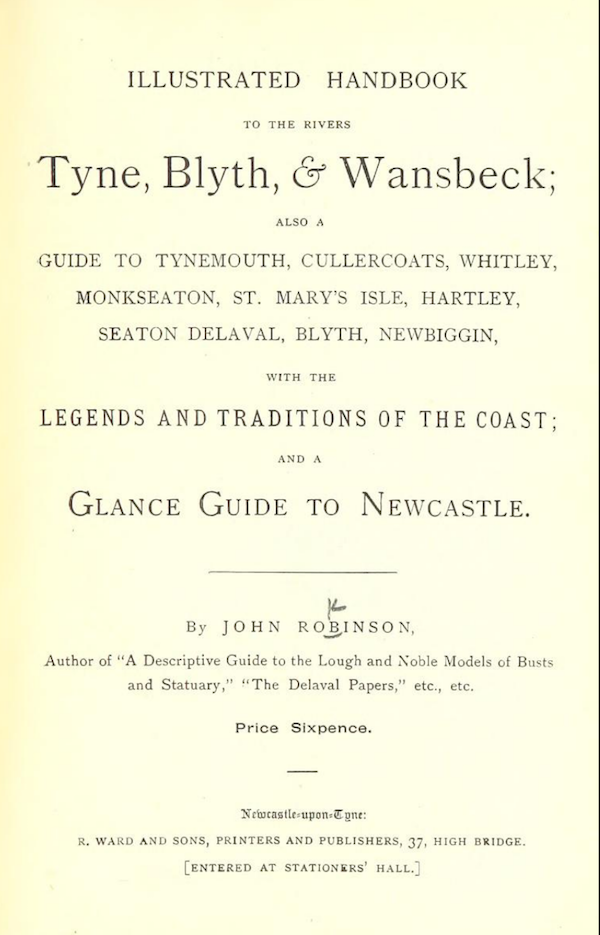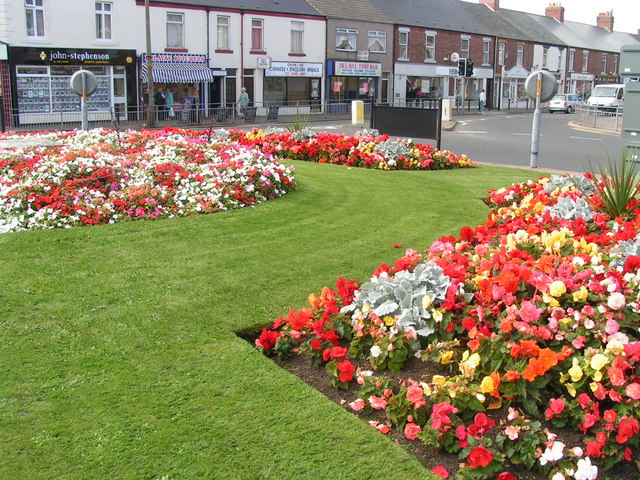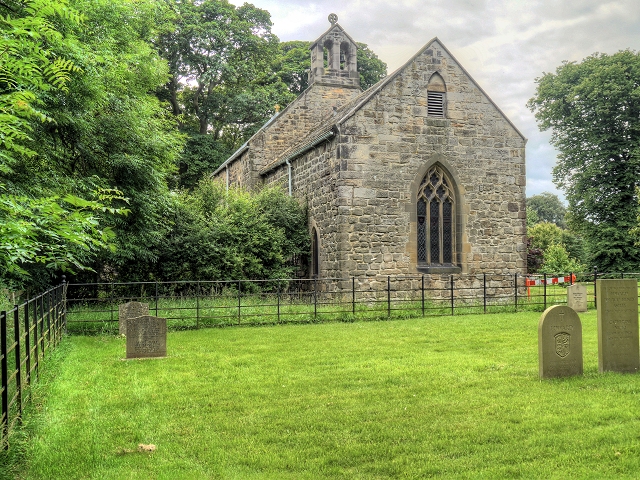Topics > Northumberland > Seaton Delaval > Church of Our Lady > Historical Account of The Lady Chapel, 1894
Historical Account of The Lady Chapel, 1894
Extract from: JOHN ROBINSON (1894), ILLUSTRATED HANDBOOK TO THE RIVERS Tyne ,Blyth,& Wansbeck; ALSO A GUIDE TO TYNEMOUTH, CULLERCOATS, WHITLEY, MONKSEATON, ST. MARY'S ISLE, HARTLEY, SEATON DELAVAL, BLYTH, NEWBIGGIN, WITH THE LEGENDS AND TRADITIONS OF THE COAST; AND A Glance Guide to Newcastle.
THE LADY CHAPEL.
The Lady Chapel, now Delaval Parish Church, is one of the most complete and beautiful pieces of antiquity in England; one of a class of castle Chapels, of which but for examples are extant. It is the only remaining portion of the ancient castle of the Delavals, and has stood through all the fortunes of the family of its original owners, from the days of William the Conqueror, and if tradition and its own character has any weight, since Saxon clays themselves. Had there been no other feature of interest to be seen in the district in which it stands, this small chapel, now the Parish "Church of the New Parish of Delaval, it alone would have been a shrine worthy of " a pilgrimage. The exact date of its dedication is lost in antiquity, yet the double row of zig-zag ornamentation on its two lofty Norman arches, and the plain heavy capitals of its low sturdy pillars, fix the date of its erection at the end of the 11th century, probably about 1090. With the exception of the rebuilding of the chancel wall— using up the old Norman material— in the 14th century, no structural alteration has taken place since that time. Everything in the chapel brings vividly before us the grandeur of its ancient owners. Here hang the mouldering trophies of their martial pride, won centuries ago, while beneath our feet they themselves sleep.
The two most interesting pieces of antiquity within the walls of the Lady Chapel, are the recumbent effigies of a Knight and his Lady. The name of the warrior is obscured in the mists of the past: yet if we take the evidence of history, and the effigies themselves, we are justified in the conclusion that they are the memorials of Hubert De La Val, and his wife Richolda. The hauberk of chain armour which clothes both body and limbs of the knight ;the helmet, siniply conical, with a nob at the top, and a rim below; and the long kite-shaped shield, are all peculiar to the 11th century. While the dress, and ornamentation on drapery of the lady is as distinctively that of the same period. Hubert De La Val, the first of the family of whom we have any authentic record in connection with Northumberland, was the builder of the church. In 1121 he gave the tithes of Seaton, Newsham, Dissington, and Black Callerton to Tynemouth Priory ;and after his decease, his son, Robert of Seaton, and his widow, Richolda, gave to Hexham Abbey the lands of Eachwick. What more probable, therefore, than that the children of such benefactors of the Church, should commemorate their parents' holy lives, by erecting altar tombs over their graves in the church which they had built. The shape of the shield by the knight's side, the handle of his sword, the design of his mail, and the crossed position of his legs, all point as evidence that he was one of the earliest of Crusaders, who rescued the Holy Sepulchre from the Infidels in1099, under Robert of Normandy, uncle to this same Hubert De La Val. The effigies would originally be placed on an altar tomb at the east end of the Church, above the family vault; but during the alterations which took place in the 14th century, they were removed, and placed in each corner of the west end of the nave. There they had remained until the beginning of the year 1892, when through the representation of the writer's views to Lady Hastings, they were once more removed to the chancel, within the altar rails, where they are now seen to much better advantage, and are safe from further mutilation. Grouped all round the interior of the chapel are emblems of the ancient splendour and prestige of the Delaval family. Numerous banners suspended from the walls, now decayed into shattered fragments, and the flag staffs of others, are all that remain to remind us of some of the most glorious deeds in English history; for these old arrow slit, and shot torn banners, the original companions of the warriors of the family, had been at the taking of the Holy Sepulchre; on the battlefield of Cressy; at Agincourt, and on the Field of the Cloth of Gold; they have truly.
"Braved a thousand years
The battle and the breeze."
High up on the north wall of the nave is fixed a steel helmet of ancient date, with the crest of the Delavals— a Ram's head— on the top of it. Lower down on the wall hang the steel gauntlets, together with a small armorial escutcheon. In the chancel are the flag staffs of banners which the hand of time has removed, like their original owner; yet the emblematics word, shield, and helmet, with the family crest, are suspended from brackets high above the altar. Deep down in the solid rock, under the altar, is hewn out the sepulchre, where for upwards of eight hundred years has been laid to rest the long line of Delavals.
The Hon. Sir Francis Blake Delaval, K.B., born 16th March,1727; died August, 7th, 1771, aged44years, was the last of the family to be buried in their private chapel; the two last owners in the Delaval line being buried in Westminster Abbey. Hanging on the north wall of the nave are the hatchments of the last three representatives of the family; whereon can be read their various honours and alliances with historic houses of the United Kingdom, from the days of William the Conqueror down to the close of the last century. On the west and south walls of the nave are placed the hatchments of the present family, who succeeded to the Delaval estate, the Astleys, of Melton Constable, Norfolk, who were allied to the Delaval family in the middle of the last century The Chapel has been built on the typical Norman plan of nave, choir, and chancel. Originally there had been two entrances, but the western doorway now only remains. This doorway belongs to the same age as the Norman arches inside the building; it has a sculptured tympanium and a small zig-zag indented label round it. The design in relief upon it has disappeared through decay, except a small head in the middle of the tympanium. High up in the wall above the doorway is a latticed window which leads to the small belfry, in which there were originally two bells, but only one of which now remains, which is believed to be a pre-reformation bell, although there are no ornamentation on it. The window, and the three armorial shields below it, are protected from the weight of the high pitched gable by a small arch. Inside the door-way, and directly behind the three armorial shields outside, are five shields of the same size and pattern. These shields, each bearing a coat of arms, are of the greatest interest, for they contribute a valuable link to the history of this ancient family of the Delavals, and also of that of the Chapel itself. When the effigies were in their original position on an altar tomb in the chancel, the sides of the tomb would be ornamented with the eight shields which are above the doorway. The five shields inside being protected from the weather are in a good state of preservation, while the three on the outside are not so well preserved. Yet on these eight shields there are only three coats of arms, four Delaval arms; two lions rampant; and two Templars' Crosses. The lion rampant is the arms of the Percy and Grey families to both of which the Delavals were allied by marriage. The Cross was the usual armorial bearing of a Crusader. There cannot be much doubt that heraldry originated in the East, and was brought home by the Crusaders. These shields are therefore among the earliest we have preserved in Europe. They are however of later date than the period indicated by the armour and clothing of the knight and his lady,. Monuments are as much the memorials of those who erect them as those to whom they are erected. It was the custom to ornament the monuments with the coats of arms of the children of the deceased: thus we find that the tomb of EdwardIII.in Westminster Abbey, is ornamented with the arms of the King's children, each with an appropriate shield. And the altar tomb of Hubert De Le Val, and his wife Richolda would, in like manner, bear the coat of arms of their children, who caused the effigies to be carved. The presence of the Astroid on the Delaval shield, and on the two lion shields, intimate that the memorial was erected by the third son of the first house of the Delavals. Unfortunately the early pedigree of the family is not very clear; for the first three or four generations we have no authentic record. These shields are therefore of the greatest interest and value, as a connecting link between the first house and the present age. They would be placed in their present position when the structural alterations of the Chapel took place in the 14th century.
The date of the rebuilding of the Chapel is indicated by the extremely rare double piscina, built into the south wall of the chancel, together with a beautiful shell-patterned bracket projecting from the east wall, on which would stand the image of the Virgin Mary, to whom the Chapel is dedicated. The design of the piscina is deserving of careful notice, it is of solid stone, and one of the most chaste of the very few that are left in our pre-reformation Churches. On the west wall of the Chancel, immediately facing the piscina, are two small square recesses, in which the sacred vessels would be kept. The piscina was used to remove the water in which the priest washed his hands, as well as that with which the chalice was rinsed at the time of the celebration of the mass. The shelf in the piscine was used for the purpose of a credence table to receive certain of the sacred vessels that were used at the service of the mass, previous to their being required at the altar.
The windows are all modern; but the very pretty stained glass window in the south wall of the choir is deserving of notice. It represents a medieval figure— a Prince of Wales— kneeling before an open bible; on his coat of mail are the arms of France and England quarterly; whileo n the four sides of the central design are beautiful representations of Angelic musicians. The whole is remarkable for the richness of colour and artistic beauty. It was bought by Sir Jacob Astley, the first LordHastings, at the destruction of the Colosseum, London. The east window is also modern, but the ancient stone, with flowing quarter foils, now placed against the outside wall of the Church, enable us to see the original beauty of the 14th century windows.
On the south side of the choir wall, next the nave, the clearly incised stone work round the doorway is in good preservation; and in the stone work round the small windows above the old doorway is a portion of pre-Norman interlaced knot-work ;time and exposure have almost obliterated the marking, yet in a favourable light the Saxon design can be traced. On the north side of the choir are traces of either a doorway or a low window; by which means the lepers, or plague-stricken people, could behold the celebration of mass, and the elevation of the host. High up on the north wall of the nave is an ancient Saxon window, now built up, which is of the greatest interest, from being one of the very few that are now to be found in England. The best known examples are to be found in the chancel of Jarrow Church, which are, according to high authority, " of an age coeval with that of the Venerable Bede."
Thus it will be seen that this small, secluded building, overshadowed by the ancestral trees, and notably of the two ancient yew trees, which tradition says were planted by the first Crusaders themselves, is full of historical interest. For about eight hundred years it was the private chapel of Delaval family. In1891 it was presented by Lord Hastings to the people as the Delaval Parish Church. It is a gift worthy of the fame the members of the ancient family won for themselves, by their piety, their chivalry, and their love of freedom.

from http://access.bl.uk/item/pdf/…
JOHN ROBINSON (1894), ILLUSTRATED HANDBOOK TO THE RIVERS Tyne , Blyth, & Wansbeck etc.
- JOHN ROBINSON (1894), ILLUSTRATED HANDBOOK TO THE RIVERS Tyne ,Blyth,& Wansbeck; ALSO A GUIDE TO TYNEMOUTH, CULLERCOATS, WHITLEY, MONKSEATON, ST. MARY'S ISLE, HARTLEY, SEATON DELAVAL, BLYTH, NEWBIGGIN, WITH THE LEGENDS …
Added by
Simon Cotterill


from http://access.bl.uk/item/pdf/…
JOHN ROBINSON (1894), ILLUSTRATED HANDBOOK TO THE RIVERS Tyne , Blyth, & Wansbeck etc.
- JOHN ROBINSON (1894), ILLUSTRATED HANDBOOK TO THE RIVERS Tyne ,Blyth,& Wansbeck; ALSO A GUIDE TO TYNEMOUTH, CULLERCOATS, WHITLEY, MONKSEATON, ST. MARY'S ISLE, HARTLEY, SEATON DELAVAL, BLYTH, NEWBIGGIN, WITH THE LEGENDS …
Added by
Simon Cotterill






